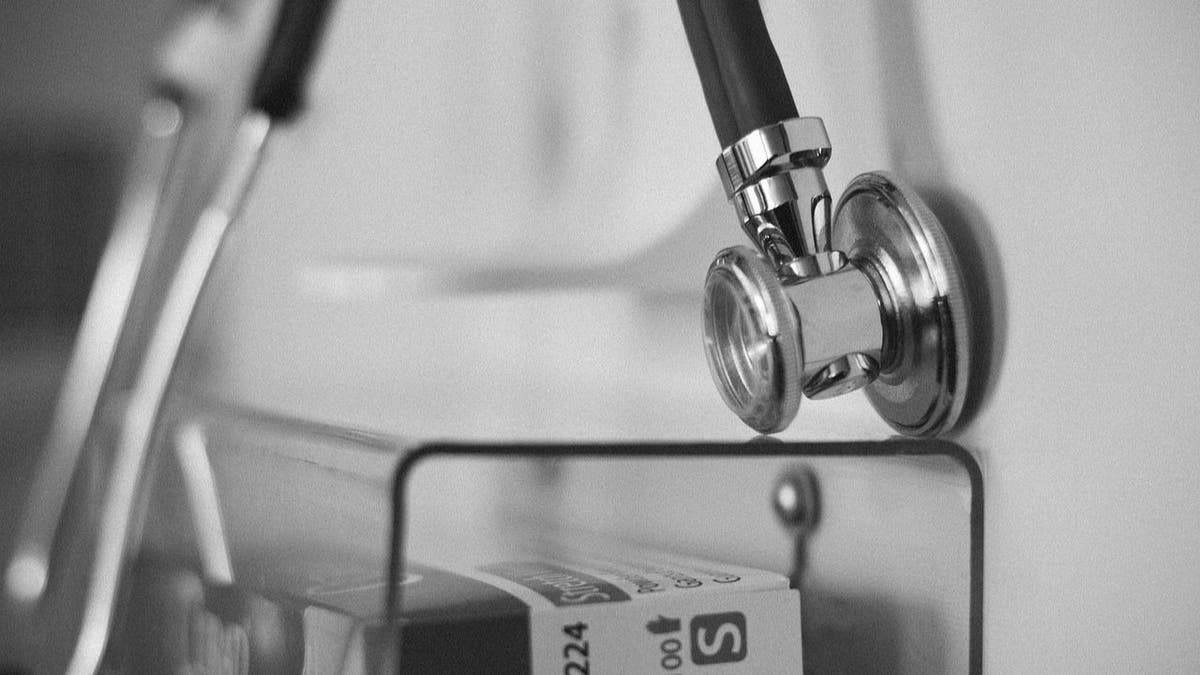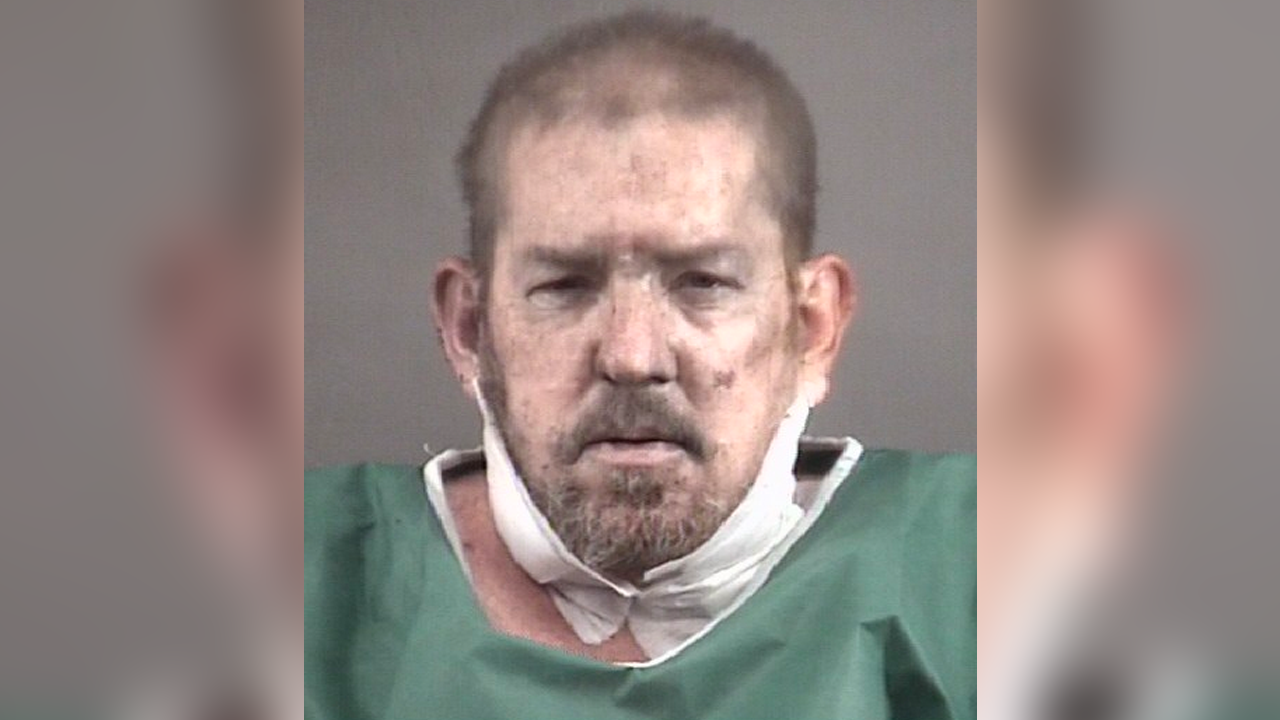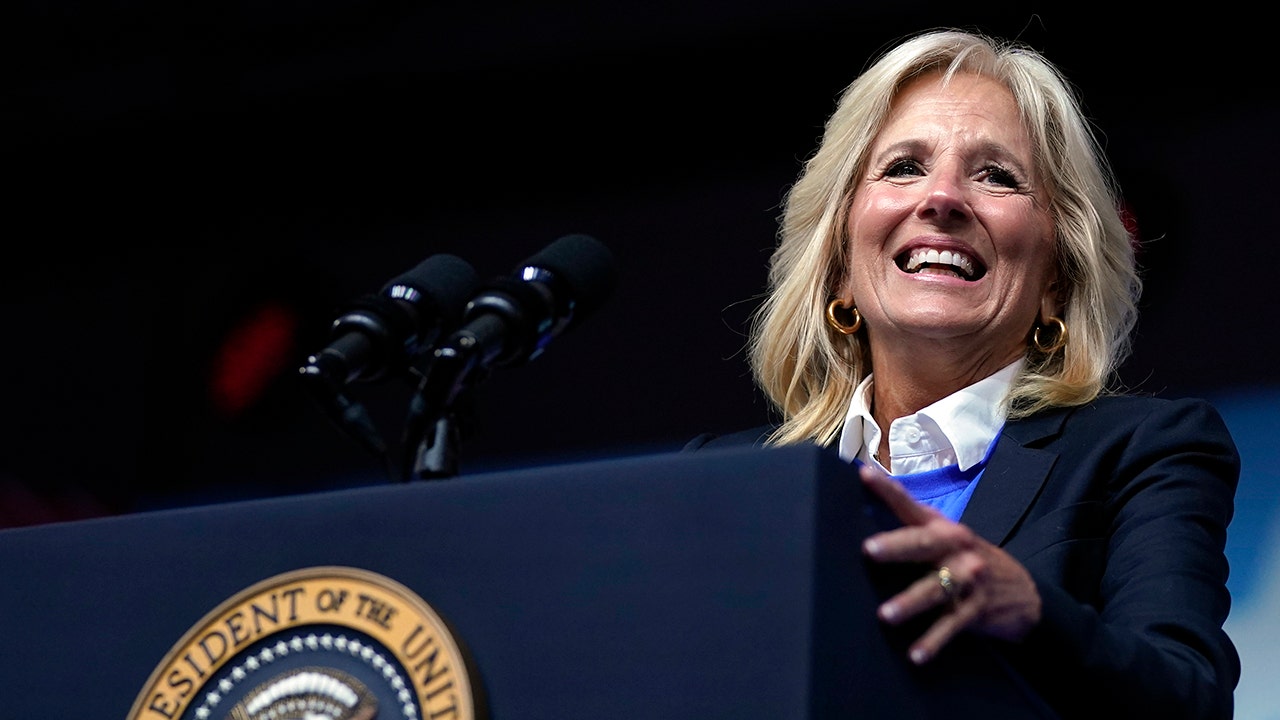Technology
Phone cooler makers need to chill with all the ice
/cdn.vox-cdn.com/uploads/chorus_asset/file/25424391/Neveika_phone_cooler.jpg)
I don’t know about you, but when I have a nasty case of the hot phone, I have to get rid of that heat this instant. Just kidding, I usually just put it down for a while or restart it when it’s being especially stubborn. But there are companies out there marketing a different solution: little stick-on phone-cooling fans that purport to draw all that heat away. And their product images are a little, uh, excessively icy.
How did it come to this? What kicked off this arms race of increasingly frosty phones? I have to assume things started innocently enough, but these RGB-riddled things are pretty squarely aimed at gamers — I’d guess it didn’t take long for these product shots to snowball into the wildly unrealistic pictures on Amazon today.
In this scenario I’ve invented, this Trakxy Magnetic Phone Cooler for Gaming is what our patient zero would look like. The tasteful use of a blue phone and blue highlights circling the fan tells me all I need to know about this magnetically-attached fan.
Some mild frost here and some icicles. Maybe a bit excessive, but I don’t think I’d look at this lavender-colored puck and correctly guess its purpose otherwise, so it gets a pass.
Of course they have them for iPads, too. At first glance, this picture is pretty harmless. Until you look at the digital display. Is Teesso claiming this thing will drop your tablet to five below zero? I’m not sure I want that!
Here’s where things really start to go downhill. Black Shark claims this will drop your phone’s temperature by “up to 35°C.”
At least this one comes with finger warmers. Very considerate.
Like the low-opacity snowflake pattern overlaid on this one.
And now, here is the final boss. The phone cooler to end all phone coolers. One that nobody has ever written a bad review of because their fingers are too frozen to do so. I present the Yanism Magnetic Cell Phone Cooler.

Technology
Sony names new PlayStation leaders following Jim Ryan’s retirement
/cdn.vox-cdn.com/uploads/chorus_asset/file/23986615/acastro_STK097_01.jpg)
Sony is appointing co-CEOs Hermen Hulst and Hideaki Nishino to lead its PlayStation business from June 1st. Hermen Hulst, who currently serves as PlayStation studios chief, will be appointed as CEO of Sony Interactive Entertainment’s (SIE) studio business group. Hideaki Nishino will be appointed CEO of SIE’s platform business group, and both will report up to Sony CFO and SIE chairman Hiroki Totoki.
The unusual appointment of co-CEOs comes just months after former PlayStation boss Jim Ryan retired. Totoki had been serving as interim CEO of SIE and was working to find the successor for the SIE CEO role, but Sony has now decided it wants to split up responsibilities for leading its PlayStation business across platform and games. Both Nishino and Hulst are Sony veterans, with Nishino having served multiple roles for more than 20 years at Sony.
This is the first time Sony has appointed co-CEOs to run its PlayStation business, and it comes amid a game industry that’s reeling from layoffs over the past 18 months. Sony laid off 900 PlayStation employees earlier this year and closed its London Studio in the UK that developed PlayStation VR games. Microsoft laid off 1,900 Activision and Xbox employees earlier this year, and then shut down the Bethesda studios behind Redfall and Hi-Fi Rush last week in another round of layoffs.
Sony’s announcement of new PlayStation leaders also comes just hours before it’s due to report its latest earnings. Sony lowered its PS5 console sales forecasts last quarter, so all eyes are now on the number of PS5 units that the company managed to sell in its 2023 fiscal year ended March 31st. We might also get further hints at Sony’s ambitious PlayStation PC plans.
During an earnings call earlier this year, SIE chairman Hiroki Totoki also discussed the opportunity to grow PlayStation games on PC / multiplatform. “In the past, we wanted to popularize console… but there is a synergy to it,” said Totoki. “So if you have strong first-party content, not only with our console but also other platforms like computers, first-party can be grown with multi platforms and that can help operating profit to improve.”
Technology
What massive health care cyberattack at Ascension means for your privacy, security

Ascension, one of the largest health systems in the United States with 140 hospitals, faced a significant cyberattack that disrupted its operations. It was reported that the attack caused patient record systems to go offline, forcing medical staff to resort to paper records. This event is a stark reminder of the vulnerability of America’s health care system to cyberthreats.
CLICK TO GET KURT’S FREE CYBERGUY NEWSLETTER WITH SECURITY ALERTS, QUICK VIDEO TIPS, TECH REVIEWS AND EASY HOW-TO’S TO MAKE YOU SMARTER
Hospital workers (Ascension) (Kurt “CyberGuy” Knutsson)
What was the immediate impact of the cyberattack?
The aftermath of the cyberattack was immediate and disruptive. Emergency crews had to divert patients to other hospitals, and staff had to implement manual workarounds. Essential systems like MyChart, phone services and electronic ordering for tests and medications were affected. The company has had to delay some elective procedures and appointments, urging patients to come prepared with detailed notes on their conditions.

Mother, daughter and doctor in hospital (Ascension) (Kurt “CyberGuy” Knutsson)
MORE: 5 BEST TELEMEDICINE APPS FOR VIRTUAL HEALTH CARE
Ascension’s response
Ascension’s response was swift, with an investigation launched to determine the extent of the breach. The health system, which is based in St. Louis, has not provided a timeline for service restoration but has assured us that they are working diligently to resolve the issues. Nurses and staff have had to adapt quickly, facing challenges such as accessing electronic health records and using devices like glucometers that rely on electronic identification systems.

Emergency sign outside hospital (Kurt “CyberGuy” Knutsson)
MORE: HOW GENERATIVE AI COULD CUT HEALTH CARE COSTS AND DEVELOP NEW CANCER DRUGS
Cybersecurity in health care
The recent security failures in hospitals have been likened to car owners leaving their keys on the seat with the door unlocked. The American Hospital Association supports voluntary cybersecurity goals but has expressed concerns over mandatory measures proposed by the Biden administration. They argue that such requirements could unfairly penalize hospitals for vulnerabilities introduced by third-party technologies.

Image of stethoscope in hospital (Kurt “CyberGuy” Knutsson)
MORE: A DAD’S LIFE-SAVING INVENTION IS INSPIRED BY HIS WIFE’S NEAR-DEATH ORDEAL
The bigger picture paints concerning trend in health care
This cyberattack is not an isolated incident. It follows a concerning trend of increased cyberthreats to U.S. medical systems. Just recently, Change Healthcare suffered a similar fate, which had widespread repercussions across the health care industry. The Ascension hack, while smaller in scope, directly impacted systems crucial for patient care.
An Ascension spokesperson provided this statement, which is posted on the nonprofit’s website, “Safely caring for patients remains our highest priority as we navigate this cybersecurity incident. We are actively supporting our ministries as they continue to provide safe, patient care with established downtime protocols and procedures, in which our workforce is well-trained. It is expected that we will be utilizing downtime procedures for some time.”
You can read the company’s entire statement here.
8 proactive steps to take in the face of health care cyberattacks
In the wake of the cyberattack on Ascension, consider taking several proactive steps to protect your personal information and prepare for potential disruptions in health care services:
1) Stay informed: Keep up to date with the latest news from Ascension and other reliable sources to know the status of the systems and services.
2) Personal health records: Maintain personal health records saved on your own devices or printed out, including a list of medications, allergies, past surgeries and other relevant health information. This can be invaluable if electronic health records are temporarily inaccessible.
3) Emergency preparedness: Have a plan for medical emergencies that includes knowing alternative health care facilities and understanding how to reach them if your primary hospital is affected. For example, my nearest emergency department recently had a waiting time of several hours while a top hospital an hour away could see many patients within minutes.
4) Cybersecurity best practices: Practice good cybersecurity hygiene by using strong, unique passwords for online accounts. Consider using a password manager to generate and store complex passwords. Also, enable two-factor authentication where available.
5) Vigilance against phishing: Be extra cautious of phishing attempts, as cyberattacks often lead to an increase in phishing emails and calls, trying to exploit the situation. The best way to protect yourself from clicking malicious links that install malware that may get access to your private information is to have antivirus protection installed on all your devices. This can also alert you of any phishing emails or ransomware scams. Get my picks for the best 2024 antivirus protection winners for your Windows, Mac, Android & iOS devices.
6) Contact health care providers: If you have appointments or procedures scheduled, contact your health care provider to confirm or reschedule as needed should a cyberattack disrupt normal operations.
7) Patient portals: If you use patient portals like MyChart, monitor them for updates regarding your medical records and communication with health care providers.
8) Data breach response: In case of a data breach, be ready to follow instructions from Ascension or any affected medical provider regarding credit monitoring or other protective measures.
By taking these eight steps, you can help safeguard your personal health information and ensure better continuity of care during cyber-related disruptions.
Kurt’s key takeaways
The cyberattack on Ascension underscores the urgent need for stronger cybersecurity measures in health care. With the White House pushing for “mandatory minimum” cybersecurity standards, it’s clear that voluntary measures are no longer sufficient. The health care industry must prioritize cybersecurity to protect against such threats and ensure the safety and privacy of patient data. For us as patients, we need to have a backup plan and keep track of our medical records as much as possible.
What role should government agencies play in bolstering cybersecurity measures within private health care systems? Let us know by writing us at Cyberguy.com/Contact.
For more of my tech tips and security alerts, subscribe to my free CyberGuy Report Newsletter by heading to Cyberguy.com/Newsletter.
Ask Kurt a question or let us know what stories you’d like us to cover.
Answers to the most asked CyberGuy questions:
Copyright 2024 CyberGuy.com. All rights reserved.
Technology
Cruise is back driving autonomously for the first time since pedestrian-dragging incident
/cdn.vox-cdn.com/uploads/chorus_asset/file/25445870/1238159620.jpg)
Cruise’s autonomous vehicles are officially back on the road and driving autonomously for the first time since one of its driverless vehicles dragged a pedestrian over 20 feet in San Francisco.
Cruise said last month that it would resume testing with manually driven vehicles focused on mapping and gathering road information — minor tasks for a company with as many autonomous miles as Cruise. But Cruise needs to show local officials that it is suitably apologetic for the pedestrian-dragging incident by going slow and talking a lot about safety and trust. The company is deploying its vehicles in Phoenix, Arizona, which has long been a hotbed for autonomous vehicle testing.
Cruise needs to show local officials that it is suitably apologetic
Cruise spokesperson Tiffany Testo said the company is deploying only two autonomous vehicles with safety drivers behind the wheel. In addition, the company has eight manually driven vehicles in the city. Eventually, the service area will “gradually expand” to include Scottsdale, Paradise Valley, Tempe, Mesa, Gilbert, and Chandler — “measured against predetermined safety benchmarks.”
Cruise’s slow return to the road is noteworthy, given the huge hurdles facing the company in the wake of the October incident. Regulators accused the company of misleading them about the nature and severity of the incident, in which a pedestrian was dragged over 20 feet by a driverless Cruise after first being struck by a hit-and-run driver.
Several top executives have since left the company, including founder and CEO Kyle Vogt, and around a quarter of employees were laid off. GM has said it will reduce its spending on Cruise. And an outside report found evidence that a culture of antagonism toward regulators contributed to many of the failings.
With all that was going wrong, GM could have pulled the plug on Cruise. Indeed, the robotaxi company has been a huge financial drag on the automaker, losing $3.48 billion in 2023. Other car companies have pulled funding for their autonomous vehicle projects for much less. But instead, GM is sticking with it — and Cruise is gearing up to get back on the road — which is a sign that despite all its setbacks, the automaker is still intent on jockeying with Waymo, Tesla, and others for a spot in the race toward an autonomous future.
-

 Politics1 week ago
Politics1 week agoAustralian lawmakers send letter urging Biden to drop case against Julian Assange on World Press Freedom Day
-

 World1 week ago
World1 week agoBrussels, my love? Champage cracked open to celebrate the Big Bang
-
News1 week ago
A group of Republicans has united to defend the legitimacy of US elections and those who run them
-

 Politics1 week ago
Politics1 week agoHouse Dems seeking re-election seemingly reverse course, call on Biden to 'bring order to the southern border'
-

 World1 week ago
World1 week ago‘It’s going to be worse’: Brazil braces for more pain amid record flooding
-

 Politics1 week ago
Politics1 week ago'Stop the invasion': Migrant flights in battleground state ignite bipartisan backlash from lawmakers
-

 World1 week ago
World1 week agoGerman socialist candidate attacked before EU elections
-

 World1 week ago
World1 week agoSpain and Argentina trade jibes in row before visit by President Milei














